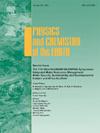基于地面观测的气溶胶全球分类:经验方法与机器学习算法的比较
IF 3
3区 地球科学
Q2 GEOSCIENCES, MULTIDISCIPLINARY
引用次数: 0
摘要
气溶胶是悬浮在固体和液体状态下的大气颗粒,通过散射和吸收阳光对气候过程产生重大影响。它们具有独特的物理、化学、光学和微物理特性。此外,确定气溶胶类型也很重要,因为它提供了对其特征和行为的关键见解。因此,目前的研究通过位于六大洲的50个AERONET(气溶胶机器人网络)站点调查了气溶胶的光学和微物理特性的全球分布。基于这些特性,采用经验方法将气溶胶分为6大类:粉尘气溶胶(DA)、大陆气溶胶(CA)、高吸收气溶胶(HA)、低吸收气溶胶(LA)、无吸收气溶胶(NA)和不确定气溶胶(UC)。在整个研究期间以及夏季和冬季,分析了所有站点气溶胶类型的优势、平均频率及其时空变化。研究结果表明,在整个时期和夏季,DA和UC气溶胶类型在西非和中东都很普遍。除东亚地区外,CA类型在全球整体和冬季的分布较为均匀。相反,在整个期间,HA和LA类型在西非的频率较低,在夏季西非和中东的发生率均有所减少。NA型主要在东亚所有时期都观察到-整体,夏季和冬季。为了补充经验分类,采用支持向量机(SVM)、朴素贝叶斯(Naive Bayes)和逻辑回归(Logistic regression)三种机器学习(ML)算法进行气溶胶分类,并将其性能与经验方法进行比较。使用性能指标评估模型的有效性,包括准确性、精密度、召回率、f1分数和混淆矩阵。在机器学习方法中,SVM和朴素贝叶斯的总体准确率最高,分别达到98%和96%,对于NA类型具有完美的分类(100%的准确率,召回率和f1分)。逻辑回归也表现良好,准确率为96%,对于NA类型具有高精度(97%),召回率(100%)和f1评分(99%)。本文章由计算机程序翻译,如有差异,请以英文原文为准。
Global classification of aerosols based on ground observations: A comparison between an empirical method and machine learning algorithms
Aerosols are atmospheric particles that remain suspended in both solid and liquid states, significantly influencing climatic processes through the scattering and absorption of sunlight. They possess distinct physical, chemical, optical, and microphysical properties. Moreover, identifying aerosol types is also essential, as it provides crucial insights into their characteristics and behavior. Therefore, the current study investigates the global distribution of aerosol's optical and microphysical properties across 50 AERONET (Aerosol Robotic Network) sites located on six continents. Based on these properties, aerosols were classified using an empirical method into six major types: Dust Aerosols (DA), Continental Aerosols (CA), Highly Absorbing (HA), Low Absorbing (LA), Non-Absorbing (NA), and Uncertain (UC). The dominance of aerosol types, their mean frequency, and their spatial and temporal variations were analyzed across all sites during the overall study period as well as during summer and winter seasons. The findings indicate that DA and UC aerosol types are prevalent in West Africa and the Middle East during both the overall period and summer. The CA type shows relatively uniform distribution globally during the overall and winter seasons, with the exception of the East Asian region. Conversely, HA and LA types are less frequent in West Africa during the overall period and display reduced occurrences in both West Africa and the Middle East during summer. The NA type is predominantly observed in East Asia across all periods—overall, summer, and winter. To complement the empirical classification, three machine learning (ML) algorithms—Support Vector Machines (SVM), Naive Bayes, and Logistic Regression—were applied for aerosol classification and their performance compared with the empirical method. The effectiveness of the models was evaluated using performance metrics, including accuracy, precision, recall, F1-score, and a confusion matrix. Among the ML methods, SVM and Naive Bayes achieved the highest overall accuracy of 98 % and 96 %, respectively, with perfect classification (100 % precision, recall, and F1-score) for the NA type. Logistic Regression also performed well, with an accuracy of 96 %, along with high precision (97 %), recall (100 %), and F1-score (99 %) for the NA type.
求助全文
通过发布文献求助,成功后即可免费获取论文全文。
去求助
来源期刊

Physics and Chemistry of the Earth
地学-地球科学综合
CiteScore
5.40
自引率
2.70%
发文量
176
审稿时长
31.6 weeks
期刊介绍:
Physics and Chemistry of the Earth is an international interdisciplinary journal for the rapid publication of collections of refereed communications in separate thematic issues, either stemming from scientific meetings, or, especially compiled for the occasion. There is no restriction on the length of articles published in the journal. Physics and Chemistry of the Earth incorporates the separate Parts A, B and C which existed until the end of 2001.
Please note: the Editors are unable to consider submissions that are not invited or linked to a thematic issue. Please do not submit unsolicited papers.
The journal covers the following subject areas:
-Solid Earth and Geodesy:
(geology, geochemistry, tectonophysics, seismology, volcanology, palaeomagnetism and rock magnetism, electromagnetism and potential fields, marine and environmental geosciences as well as geodesy).
-Hydrology, Oceans and Atmosphere:
(hydrology and water resources research, engineering and management, oceanography and oceanic chemistry, shelf, sea, lake and river sciences, meteorology and atmospheric sciences incl. chemistry as well as climatology and glaciology).
-Solar-Terrestrial and Planetary Science:
(solar, heliospheric and solar-planetary sciences, geology, geophysics and atmospheric sciences of planets, satellites and small bodies as well as cosmochemistry and exobiology).
 求助内容:
求助内容: 应助结果提醒方式:
应助结果提醒方式:


